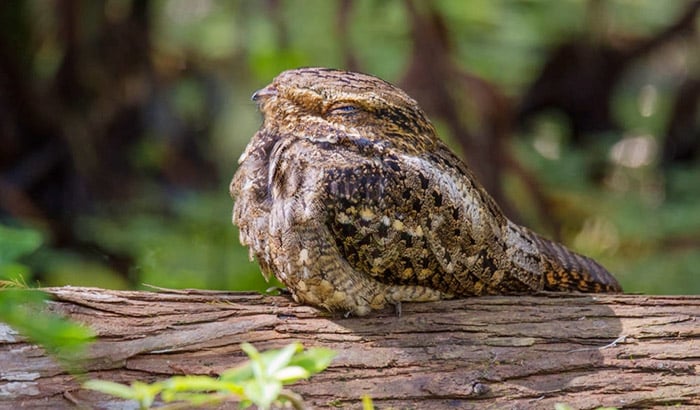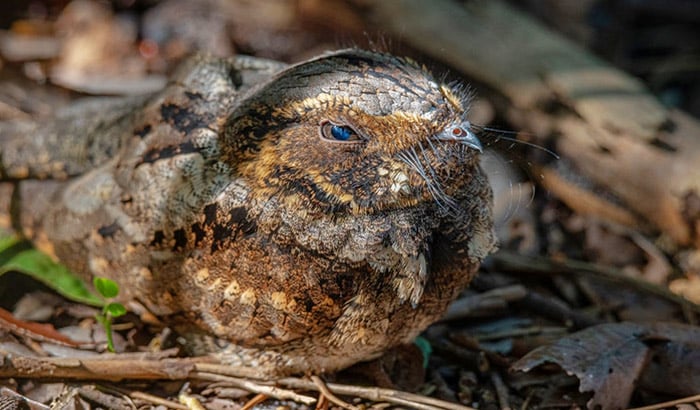Have you heard noisy sounds of birds calling at night or during a full moon? Well, you just hear a flock of whippoorwills, which are nocturnal songbirds that are about 8.7 to 10.6 inches in length and weigh around 1.5 to 2.4 ounces. Probably, you want to see these birds that are singing all night.
These birds are rarely seen than heard. They are difficult to see because they are quite detached and unresponsive. However, you can spot them by doing things that may draw them to your yard. In this article, we will share some ways on how to attract whippoorwills to your yard or patio. Let’s get started.
Contents
Natural Habitat of Whippoorwills
Whippoorwill belongs to the family of Caprimulgidae and looks similar to the common nightjar of Europe. These nocturnal songbirds live in the woods of North America. Their range runs through Northern Arkansas, West to Iowa, Missouri, Northern Georgia, South Carolina, Alabama, and Mississippi.
Meanwhile, the Eastern whippoorwill lives and breed in evergreen-deciduous or dry deciduous forest with no or little open areas. The different forests they choose to live in include pine Flatwoods, pine plantations,pine-oak with juniper, low-elevation white pine, northern hardwood forests, birch, oak, aspen trees.
They do not stay in big tracts of uninterrupted forest that have a thick canopy. During winter, these Eastern whippoorwills live in the subtropical forest or broadleaf tropical forest that is near open spaces. Also, whippoorwills survive for about four years in the wild.
Their mating season takes place during summer and spring. They lay eggs on decaying logs, leaf litter, and bare ground.
Whippoorwills Favorite Foods
Whippoorwills are night birds, and they look for food at night, particularly during a full moon. They eat insects flying at night. However, they also eat insects that do not fly.
Their most favorite food is moths. They also eat flying beetles, mosquitoes, crickets, ants, stoneflies, wasps, click-beetles, and grasshoppers.
The whippoorwills lay their eggs and hatch their eggs about ten days before a full moon. They do this so they can catch insects all night while the light of the moon is so bright. Hence, they can have enough food to feed their young.
How To Attract Whippoorwills To Your Yard
If you want to see these noisy and mysterious birds, you have to do these five things below:
Plant flowers that release the scent in the evening
The staple diets of whippoorwill are moths. You may plant flowers that release the scent in the evening to attract moths in your yard, so whippoorwill draws in your home.
These flowering plants include wisteria, angel’s trumpet, petunia, regal lily, a tobacco plant, star jasmine, night phlox, honeysuckle, night-scented stock, summer phlox, pinks, and Hesperis matronalis. The moths are pollinating insects, and they like the copious dilute nectar and fragrance of these flowers.
Meanwhile, the whippoorwill enjoys eating the moths. If you have lots of moths in your garden, you will then see these nocturnal birds hovering in your yard.
Provide bright lights
Yes, whippoorwills are moth eaters. Besides planting flowers that release scent at night, you may also provide bright lights such as white bulbs, black lights, or mercury vapor lights.
Why is this so? It is because these bright lights can attract various kinds of moths. And whippoorwill love moths. Of course, they like to feast on moths.
Plant shrubs and trees in your yard
Whippoorwill also eats other insects such as grasshoppers, stoneflies, bees, and wasps, among others. You can find these insects in thick shrubs and trees. So, if you want to attract these songbirds, you may plant several trees and trees in your garden.
Supply nesting grounds
As mentioned above, these birds lay eggs on leaf litter. You may place leaf litter such as twigs, leaves, and fallen or decaying bark on the ground. Or clear your yard or ground. You will notice female whippoorwill nesting in your yard.
Clear your yard or patio of unfriendly animals
If whippoorwills see dogs, cats, coyotes, and owls, they will fly away and never set their feet in your yard. These animals are enemies of whippoorwills. So, clear out these animals in your yard or patio, and indeed, you will see flocks of whippoorwill visiting your yard.
Conclusion
The calling or singing of whippoorwill birds may seem noisy to other people. However, these birds look appealing to some people. They want to see and hear them, especially during a full moon.
If you are this person, do not worry. These birds will draw near your yard if you do any of the ways discussed in this article. Indeed, you will be delighted to see a flock of whippoorwill flying and nesting in your backyard.
We are open to any suggestion about how to attract whippoorwills or other birds. Simply, write them in the comment box below. Surely, we will read and appreciate them.


